As we made our way out of the Black Hills after visiting the Crazy Horse Memorial, we were engulfed in a fierce rainstorm. Many drivers had pulled off the road to wait it out, but our intrepid drive, Mick, kept us steady on the way to our next appointment at the SD School of Mines and Technology in Rapid City where we visited the Museum of Geology.
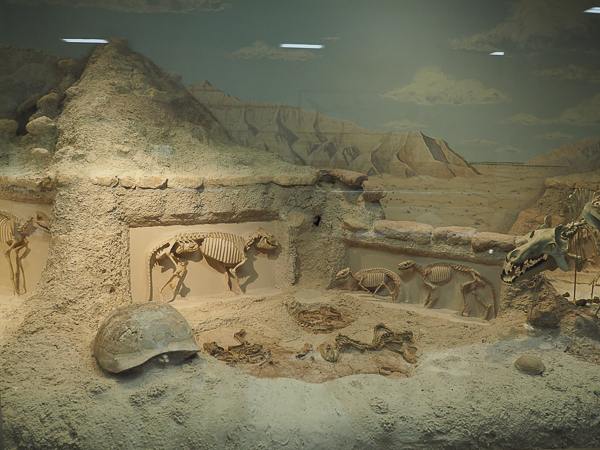
The Museum of Geology also has a number of exhibits of local fossils.
These are prehistoric horses. The horse originated in what is now North America, but went extinct about 10,000 years ago. Theories abound, but no one knows why.
At one time horses and horse ancestors of various sizes and configurations lived more-or-less side by side. Eventually only the larger equus species that we know today migrated away from North America into Asia, Europe, and Africa where they survived.
When the Spanish conquistadors brought horses back to the American continents, they quickly adapted to their ancestral homeland. It was not so much an introduction as a re-introduction.
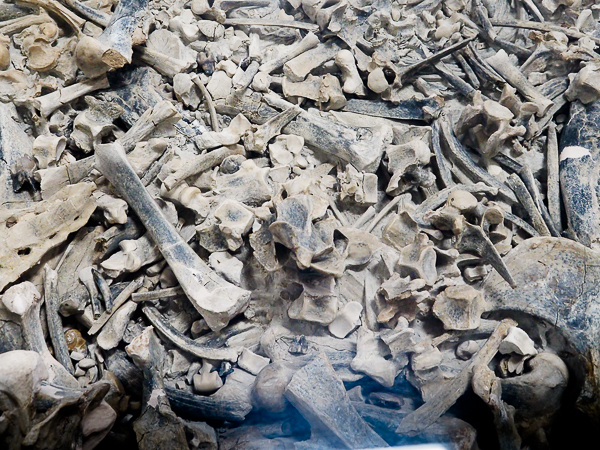
We are used to seeing fully articulated skeletons in museums, but this display shows how those bones are first found. According to the information with this exhibit, the encasing rock was cleaned away from these bones, but their configuration is as they were found.
Jigsaw enthusiasts would have their work cut out for them.
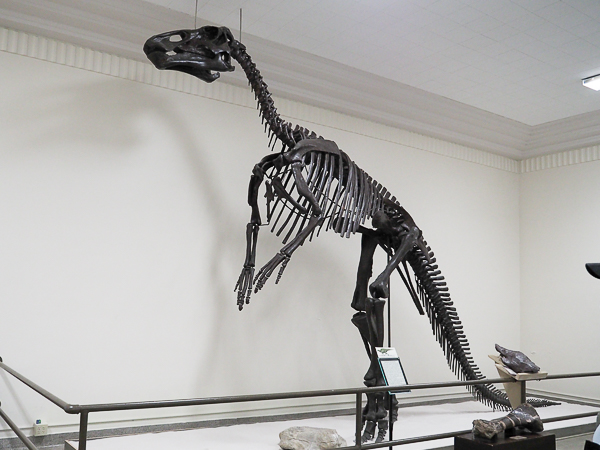
And the scientists don't always get it right!
When this edmontosaurus saskatchiwanesis was assembled and mounted, scientists thought it walked on two legs like a T-Rex as shown here. In fact, this herbivore usually walked on four legs, although it could stand on two briefly.
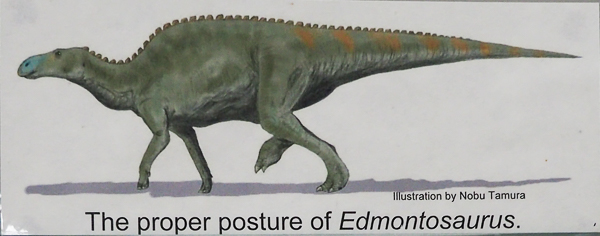
Changing the mount would take a lot of time and money, so it is left as-is with an explanatory picture and write-up as part of the display.
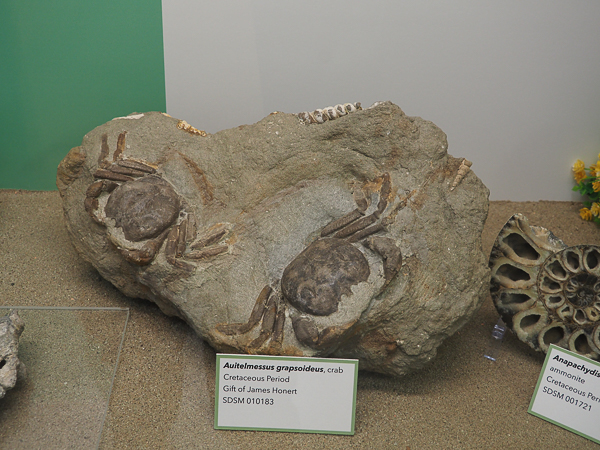
These Cretaceous fossil crabs don't look that different from the blue crabs of today.
Yum!

Yes, the Museum of Geology did have many geologic specimens, but rocks don't tend to be as photogenic as fossils.
The best rock display was of fluorescent rocks in a darkened room. They glowed in many colors when a black light was triggered. I hope this brief Facebook video of one of the rocks is accessible.
Click your "back" button to return to the previous page or click for our picture album.